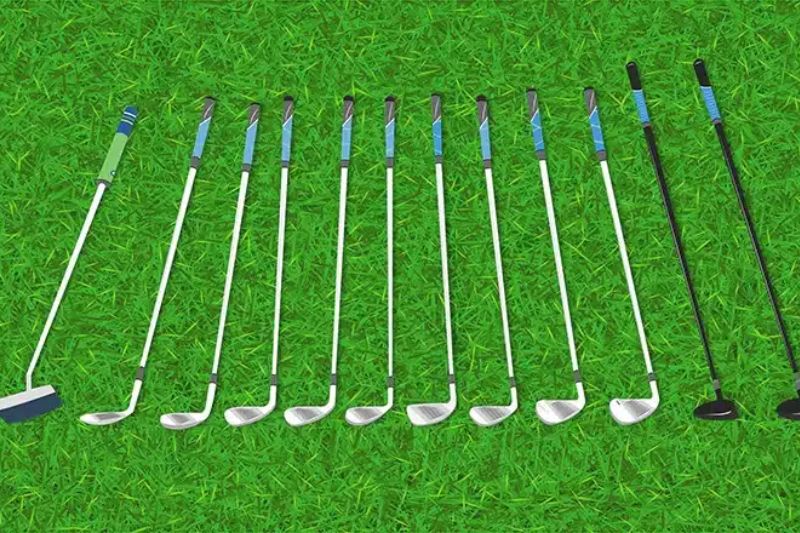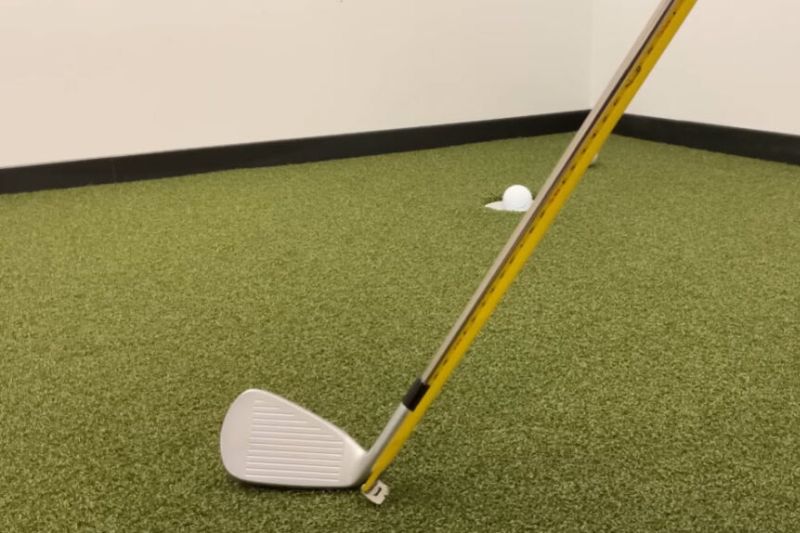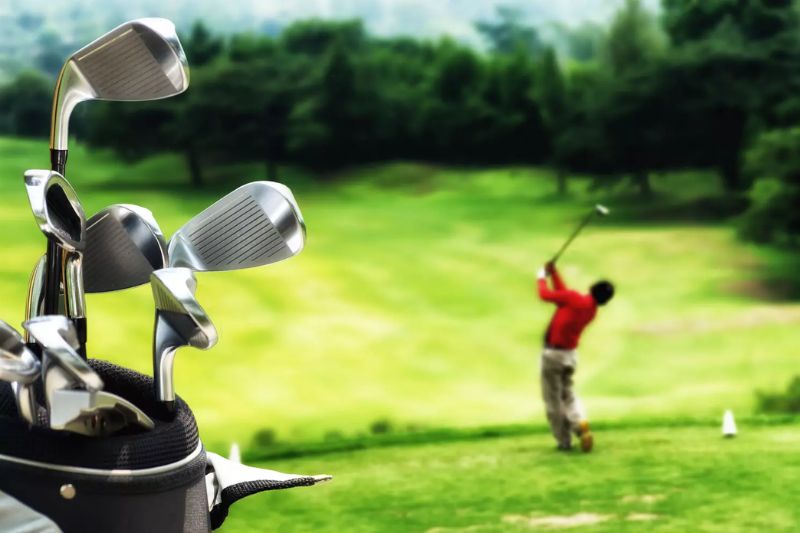In the world of golf, where precision and finesse reign supreme, understanding the intricacies of your equipment is paramount. One often overlooked but vitally important aspect is golf club length. This seemingly simple measurement plays a pivotal role in determining the effectiveness and efficiency of your swing. Imagine trying to play the piano with maladjusted keys – the music would sound discordant and frustrating. The same holds true for golf – an improper club length can disrupt your swing mechanics, hindering your ability to hit the ball accurately and with desired distance.
Understanding Golf Club Length: A Crucial Aspect of Your Swing

Golf club length is more than just a number; it’s a fundamental aspect that influences every shot you take on the course. The length of a golf club affects your stance, posture, swing mechanics, and ultimately your performance. When you understand how club length interacts with your body and swing style, you can make informed decisions about your equipment.
The relationship between club length and swing mechanics is intricate. A club that is too long or too short can lead to poor posture at address, which can throw off your entire swing sequence. For instance, if a club is too long, you may find yourself bending over excessively, leading to a less stable base and inconsistent shots. Conversely, a club that is too short can restrict your natural swing arc, resulting in a lack of power and control.
Moreover, the importance of club length extends beyond mere comfort. It directly impacts your ability to generate speed and leverage during your swing. A properly fitted club allows you to maintain a balanced stance, enabling you to execute your swing with confidence and precision. In essence, understanding golf club length is crucial for any golfer looking to improve their game.
The Role of Club Length in Swing Mechanics
When discussing swing mechanics, club length plays a vital role in how you interact with the ball. Each golfer has a unique swing style influenced by their physical attributes, including height, arm length, and overall flexibility. A club that fits well will allow you to maintain the correct posture and alignment throughout your swing.
For example, golfers with longer arms may require longer clubs to achieve optimal swing mechanics. If they use standard-length clubs, they might find themselves compensating by adjusting their stance or grip, which can lead to inconsistencies in their shots. On the other hand, shorter golfers may benefit from shorter clubs that allow them to maintain a comfortable and effective swing path.
Additionally, the angle of attack and swing plane are also affected by club length. A club that is too long can lead to a steeper angle of attack, resulting in inconsistent ball striking. Conversely, a club that is too short may cause a flatter swing plane, limiting your ability to generate the necessary lift and distance.
The Psychological Impact of Proper Club Length
Beyond the physical aspects, there is also a psychological component to using the right club length. Golf is as much a mental game as it is a physical one. When you feel confident in your equipment, you are more likely to approach each shot with a positive mindset. Conversely, using clubs that do not fit your body can lead to frustration and self-doubt.
Having the right club length allows you to focus on your technique rather than worrying about whether you’re using the right equipment. This mental clarity can translate into better performance on the course. When you know that your clubs are tailored to your physique and swing style, you can approach each shot with confidence, leading to improved consistency and overall enjoyment of the game.
The Importance of Proper Golf Club Length for Accuracy and Distance

Proper golf club length is the cornerstone of a well-balanced swing. It dictates the optimal distance your hands are from the golf ball at address, influencing your posture, swing plane, and overall swing path. Understanding the significance of club length can help you achieve greater accuracy and distance on the course.
Accuracy: The Key to Consistency
Accuracy is one of the most critical factors in golf. An incorrectly sized club can lead to inconsistencies in your swing path, resulting in shots veering off target. A club that’s too long can cause an overswing, leading to slices and hooks, while a club that’s too short can restrict your swing arc, limiting your ability to generate power.
When your club length is appropriate, you can maintain a consistent swing path, which is essential for hitting accurate shots. A proper club length allows you to establish a repeatable motion, ensuring that your clubface remains square at impact. This consistency is key to improving your overall accuracy and lowering your scores.
Distance: Leveraging Your Strengths
Club length directly impacts the leverage you generate in your swing. A shorter club requires more effort to generate the same amount of power as a longer club. Conversely, a longer club can enhance swing speed, boosting distance, but only if it’s properly matched to your swing mechanics.
Finding the right balance between club length and swing mechanics is essential for maximizing distance. Longer clubs can provide additional leverage, allowing you to generate more speed through the impact zone. However, if the club length is not suited to your swing style, you may struggle to control your shots, leading to erratic distances.
Consistency: The Foundation of Improvement
A properly fitted club allows you to repeat your swing more consistently, leading to improved accuracy and distance control. Consistency is the foundation of any successful golfer’s game. When you have the right club length, you can develop a reliable routine that translates to better performance on the course.
By focusing on consistency, you can work on other aspects of your game, such as your short game and putting. When you eliminate the variable of club length, you can concentrate on refining your technique and making incremental improvements. This holistic approach to your game will ultimately lead to better scores and increased enjoyment of the sport.
Measuring Your Golf Club Length: A Step-by-Step Guide

Fortunately, determining the right club length is not a complex endeavor. You can measure it yourself using a few simple tools. Here’s a step-by-step guide to help you accurately measure your golf club length.
Gather Your Materials
Before you begin measuring, gather the necessary materials. You’ll need a tape measure or ruler, a piece of paper, a pencil, and your golf club. Having these items ready will streamline the process and ensure accurate measurements.
Stand Erect
To start, stand upright with your feet shoulder-width apart, mirroring your natural golf stance. This position will help you gauge the appropriate club length based on your typical setup. It’s essential to maintain a relaxed posture during this step to get an accurate reading.
Mark the Ground
Next, place your club on the ground, resting the clubhead against your shoe. Make sure the club is positioned as it would be at address. Once you have it in place, mark the spot where the grip ends. This mark will serve as your reference point for measuring the club length.
Measure the Distance
Finally, use your tape measure or ruler to carefully measure the distance between the marked spot and the end of the clubhead. Record this measurement in inches. This figure represents the length of your golf club and will help you determine if it aligns with standard lengths or if adjustments are necessary.
Common Golf Club Length Standards and Their Implications

Golf clubs are typically manufactured in specific length increments, with each club designed to achieve a particular trajectory and distance. The standard lengths for each club vary slightly by manufacturer, but generally adhere to established guidelines.
Standard Lengths for Different Clubs
Understanding the standard lengths for various clubs can provide insight into what might work best for your game. Here are some common standards:
- Driver:5-46.25 inches
- 3 Wood:5-43.25 inches
- 5 Wood:5-42.25 inches
- 2 Iron: 40-40.75 inches
- 3 Iron:25-39.75 inches
- 4 Iron:5-39 inches
- 5 Iron:75-38.25 inches
- 6 Iron: 37-37.5 inches
- 7 Iron:25-36.75 inches
- 8 Iron:5-36 inches
- 9 Iron:75-35.25 inches
- Pitching Wedge (PW): 34-34.5 inches
- Sand Wedge (SW):5-34 inches
Implications of Standard Lengths
The implications of standard lengths extend beyond mere convenience. They influence several key aspects of your game, including distance, loft, swing speed, and overall control.
Distance
Longer clubs are designed for longer distances, while shorter clubs are intended for shorter shots. For instance, drivers and woods are typically longer to maximize distance off the tee, while wedges are shorter to provide better control around the greens.
Loft
Clubs with higher loft angles, like wedges, tend to be shorter for increased control around the greens. This design allows players to execute delicate shots with precision, enhancing their ability to navigate tricky lies and challenging pin placements.
Swing Speed
Swing speed is another critical factor influenced by club length. Longer clubs are intended for faster swing speeds, while shorter clubs are designed for slower, more controlled swings. Understanding your swing speed can help you choose the right club length to optimize your performance.
Determining Your Ideal Golf Club Length Based on Height and Swing
While standard club lengths provide a starting point, the ideal club length for you is often tailored to your unique height, swing, and playing style. Here are factors to consider when determining your ideal club length.
Height
Generally, taller golfers require longer clubs to maintain appropriate leverage and swing path, while shorter golfers may benefit from slightly shorter clubs for better control. Height is a significant factor in establishing a baseline for club length, but it’s not the only consideration.
For example, a golfer who stands 6’4″ may need longer clubs to accommodate their height, while someone who is 5’6″ might find standard lengths too long. Customizing club length based on height helps ensure that each golfer can achieve a comfortable and effective swing.
Swing Speed
Swing speed is another crucial factor to consider. Those with faster swing speeds might prefer slightly longer clubs to maximize distance, while slower swing speed players may find shorter clubs more manageable. Understanding your swing speed can help you select the right club length to optimize your performance.
For instance, a player with a high swing speed may benefit from longer clubs that allow them to generate additional distance. Conversely, a player with a slower swing speed may find that shorter clubs provide better control and accuracy, leading to more consistent results.
Swing Plane
The angle at which you swing your club is another crucial consideration. A flatter swing path may necessitate slightly longer clubs to achieve optimal ball flight. Conversely, a steeper swing path may require shorter clubs to maintain control and accuracy.
Evaluating your swing plane can provide valuable insights into the ideal club length for your game. By understanding how your swing path interacts with club length, you can make informed decisions about your equipment and improve your overall performance.
Conclusion
Understanding how to measure golf club length is a crucial aspect of improving your game. Proper club length impacts your swing mechanics, accuracy, distance, and overall performance. By taking the time to measure your clubs and make necessary adjustments, you can enhance your golfing experience and achieve better results on the course.
Whether you choose to measure your clubs yourself or seek professional assistance, prioritizing the right equipment is essential for unlocking your full potential. By investing in your golf game and understanding the significance of club length, you can enjoy greater consistency, accuracy, and distance, ultimately leading to a more enjoyable and fulfilling golfing experience.

I am the owner of Ricks Golf Shop, a popular destination for golf enthusiasts. My passion for golf began in my teenage years and has only grown over the years. With over 10 years of experience in the golf industry, I offer expert advice and quality products. With a friendly demeanor and extensive knowledge, I ensure every customer leaves happy.
